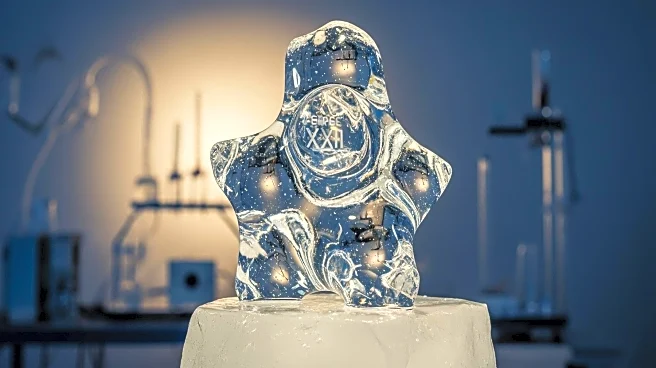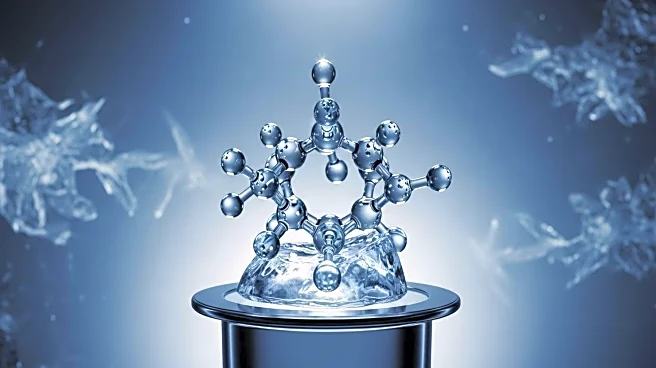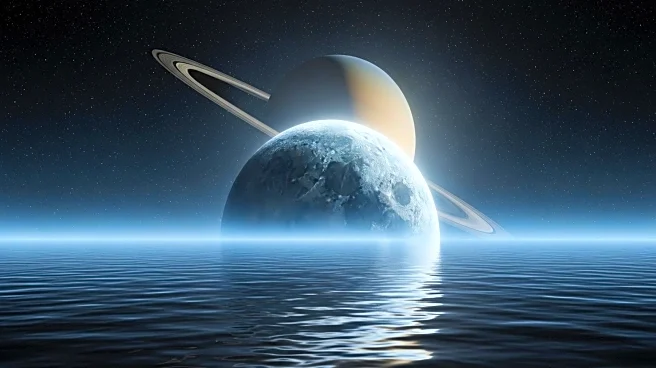What's Happening?
A team of scientists from the Korea Research Institute of Standards and Science (KRISS) has discovered a new phase of ice, termed ice XXI, which forms when water is rapidly compressed at room temperature. This discovery was detailed in a recent paper published in Nature Materials. Ice XXI emerges within the pressure range of ice VI, a form of ice believed to exist on icy moons like Titan and Ganymede. The research involved using diamond anvil cells to apply extreme pressures to water, allowing it to remain liquid at higher pressures where it would typically crystallize into ice VI. The team utilized giant X-ray lasers at the European XFEL to capture the transformation of water molecules into ice XXI, which is characterized by a unique tetragonal crystal structure.
Why It's Important?
The discovery of ice XXI is significant as it expands the understanding of the diverse crystalline structures that water can form. This research could provide new insights into the composition and behavior of icy moons in our solar system, potentially influencing future space exploration and studies of extraterrestrial environments. The ability to create new ice phases at room temperature and high pressure may also have implications for material science and the study of metastable structures. Understanding these pathways and structures could lead to advancements in various scientific fields, including physics and chemistry.
What's Next?
Further investigations are expected to explore additional high-temperature metastable ice phases and their transition pathways. Researchers aim to deepen their understanding of the crystallization process from water to ice, which could reveal more unknown ice crystal phases. These studies may contribute to the broader knowledge of water's behavior under different environmental conditions, potentially impacting theories about planetary science and the development of new materials.
Beyond the Headlines
The discovery of ice XXI highlights the complexity and mystery of water as a material, despite its simple composition of hydrogen and oxygen. This research underscores the potential for uncovering new phases of ice that could exist under specific conditions, offering a glimpse into the intricate nature of water's crystalline structures. The findings may also prompt ethical considerations regarding the exploration and utilization of extraterrestrial resources, as understanding these ice phases could influence future missions to icy moons.











